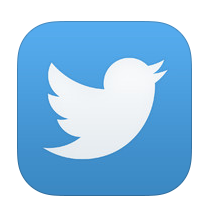 Which social media platform do you use for your business?
Which social media platform do you use for your business?
Facebook would be a safe guess. Same thing with Twitter. What about LinkedIn? YouTube? Pinterest? Google+.
Unless you’re part of a really big company, it’s unlikely you have the time or the resources to oversee accounts with all these services. The good news is that you don’t have to. Some social media platforms can benefit your brand more than others. The trick is finding which one is right for you.
Writing on QuickSprout, Crazy Egg founder Neil Patel broke down which platforms are best for which types of business.
 Twitter
Twitter
Twitter is good for publications, with 53 percent of businesses in the information and communications sectors reporting the highest rate of microblog usage.
It’s also a popular platform with B2B companies: 85 percent of B2B marketers say they use Twitter, and 50 percent of them see it as a helpful social media channel.
 LinkedIn
LinkedIn
LinkedIn is huge with B2B marketers, with 91 percent of them using the platform. 65 percent of B2B companies have picked up a customer using LinkedIn, while 50 percent say it’s an important tool to research which technologies or services they want to buy.
 Facebook
Facebook
If you’re a company with a visually driven product, you should be on Facebook. Photos account for nearly all – 93 percent – of the most engaging posts on the platform.
For B2C companies, it’s important to note that 53 percent of active Facebook users follow a brand, while 77 percent of B2C marketers have used Facebook to acquire customers.
 Google+
Google+
Google+ is popular with a number of B2B brands, including GE, HP, Cisco, Hubspot, Moz, VM Ware and Media Temple.
Patel says Google+ is good for “any brand where SEO is a crucial part of their customer acquisition strategy.”
That’s because the amount of Google +1s a URL gets is more highly correlated with search rankings than any other factor, including well-known metrics such as linking root domains, shares on Facebook and keyword usage.
In addition, 68 percent of Google+ users are men, so it’s worth having an account if your brand targets male professionals.
 Pinterest
Pinterest
If Google+ is a male-dominated platform, Pinterest is its opposite number, with a user-base that’s 69 percent women. A majority of the pins made on Pinterest – 92 percent – come from women.
Seventy percent of Pinterest users are there for shopping inspiration, and they tend to spend the most when compared to people using other social media platforms. Facebook users spend an average of $80 per order, while Twitter users spend an average of $60 per order. Pinterest shoppers spend as much as both Facebook and Twitter users combined: an average of $140 to $180 per order.
If you’re a retail business, know that consumers who use Pinterest tend to follow an average of 9.3 retailers. Pinterest accounts for a quarter of all retail referral traffic.
If you’re a business that targets moms, remember that they are 61 percent more likely to visit Pinterest than the average American. Pinterest can also help companies whose business is food: 57 percent of users discuss food-related content.
 YouTube
YouTube
Just as with Facebook, brands that are visually driven would do well to have a YouTube account. More than half of all consumers say that seeing a product video gives them more confidence in making online purchasing decisions.
YouTube also affects e-commerce businesses. Patel’s stats say 57 percent of consumers say that videos for products make them more confident when purchasing and less likely to return an item. Visitors who see a video spend two minutes longer on a site and are 64 percent more likely to make a purchase than other visitors.
Here’s one last statistic that transcends platforms: 63 percent of companies that use social media say they’ve seen an increased effectiveness in their marketing.
If you’d like to be a part of that group, IQnection can assist you in adopting a social media strategy. Our expert marketing team can help you reach a new audience, no matter which platform you use.










